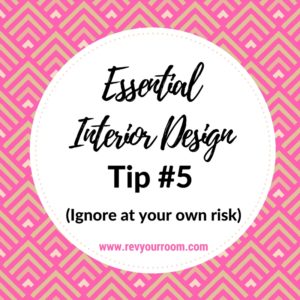Essential Interior Design Tip #5:
Interior Design is not all about the stuff. It’s what you DO with that stuff.
(Notice I added the word all. Because while it’s not all about the stuff, it is partially about the stuff. Let’s face it, you’ve got to have some stuff to design with!)
This has pretty much been my philosophy ever since I figured out that you can make almost any ordinary object sing if you put it in the right place. Any object can become something special when adding to the balance of a room.
Conversely, the most beautiful and beloved object you own can fall flat when not used properly either as a focal point or a contributor to the overall balance.
What Should You Do With the Stuff?
In a previous post we talked about how in design there are no rules. But the closest things to rules are Principles and Elements of design. We explored the Principles in some depth, but we really didn’t get into the Elements.
So without going off on a tangent the Elements of design are: Pattern, color, texture, shape, line, and space.
Elements = the stuff!
The stuff provides your patterns, colors, textures, shapes, lines, and resulting space.
Principles = what you do with the stuff!
When the Principles are properly applied to your Elements (stuff) you create a Focal Point and Hierarchy. You create a concept or theme through Unity. You create interest through Variety and Contrast. You create Rhythm. You create proper Scale and Proportion. And MOST importantly you create Balance throughout your space.
- When you use these Principles in a balanced and functional way to determine where to place your stuff, your room will be a design success.
Notice I added the word functional. We haven’t really discussed this much. But in order for a room to be successful, it must be functional.
- Functionality is the unspoken Principle of Design.
It’s such a given that it does not even warrant being listed as a Principle. So remember when creating your space that it must be usably functional as well as visually appealing.
And now for the good news…
Knowing that the success of your design does not hinge on the stuff is comforting as well as freeing. Knowing that success is more about what you do with that stuff should empower you and give you confidence to make your design decisions, especially if you are on a limited budget or feel that you are lacking in the “style” department.
Of course you could be someone who’s just oozing with style. Maybe people are always commenting on your excellent taste. If that’s the case – great! But I’m sure you’ve already figured out that good design is about much more than that.
Which leads us to our next tip…
Essential Interior Design Tip #4 – Don’t Rely On Your Awesome Sense of Style and Keen Eye for Color.



